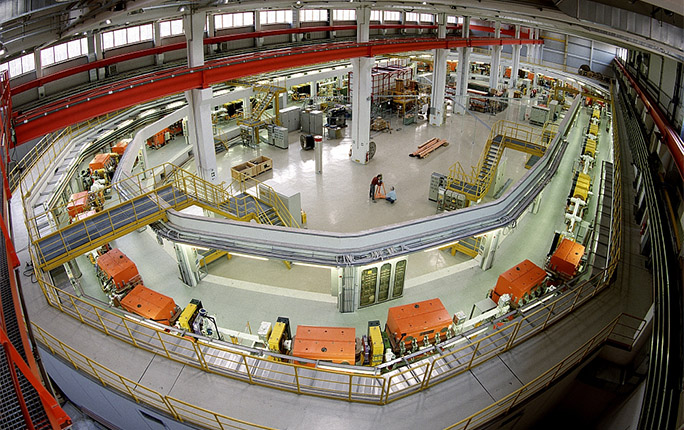AVA Partners work together to improve beam control at the COSY accelerator at FZJ

Forschungszentrum Jülich (FZJ) and Cosylab d.d. have been working together on a project to improve the beam control at the COoler SYnchrotron (COSY), a particle accelerator and storage ring at the Institute of Nuclear Physics (IKP) based at FZJ. Both Cosylab and FZJ are partners of the AVA Network and have hosted Fellows Adélaïde Grimaud and Dominika Alfs, respectively.
During AVA, Adélaïde at Cosylab helped develop a versatile control system using the Experimental Physics and Industrial Control System (EPICS) framework to handle the power supply developed within the Network. Dominika worked at FZJ on the search for polarization effects of antiprotons produced in pA collisions for which she analyzed the existing data from the beamtimes performed at the T11 beamline (CERN). This resulted in a very good understanding of the measurement conditions and design of an improved measurement setup. Currently the test measurements with the improved setup are ongoing at COSY.
COSY provides polarized and unpolarized proton beams in the energy range between 45 and 2700 MeV for basics science experiments. Alternatively, it can provide deuteron beams between 90 and 2100 MeV. The particle beam can be cooled if required to improve beam quality.
This project to improve beam control had several goals. The engineers were to make the Beam Control for the COSY machine faster and include enhanced tune-measurement tools. They also were to upgrade various parts of the control system and beam instrumentation hardware. The EPICS framework was to be utilized to allow upgraded access to beam instrumentation devices, orbit control and quadrupole-magnets control. A number of these improvements include: routine delivery of sub-mm rms orbit deviation; high brilliance beams, produced with beam cooling; numerous beam diagnostic systems seamlessly integrated into the EPICS-based control system.
To learn more about all the improvements, please follow this link.